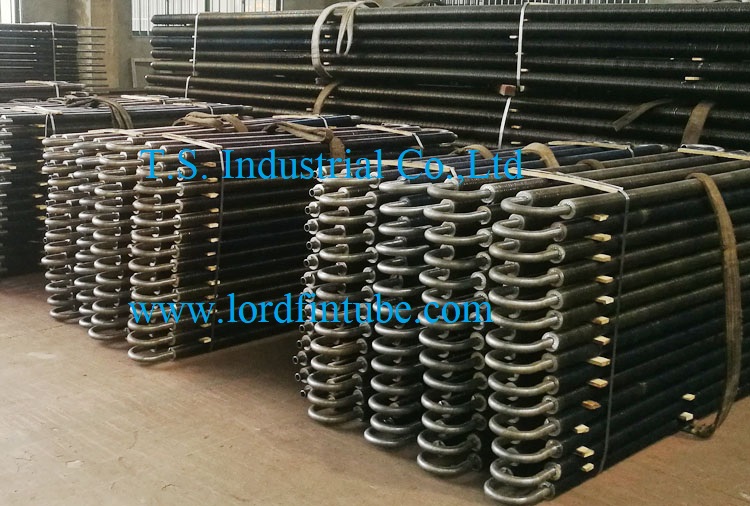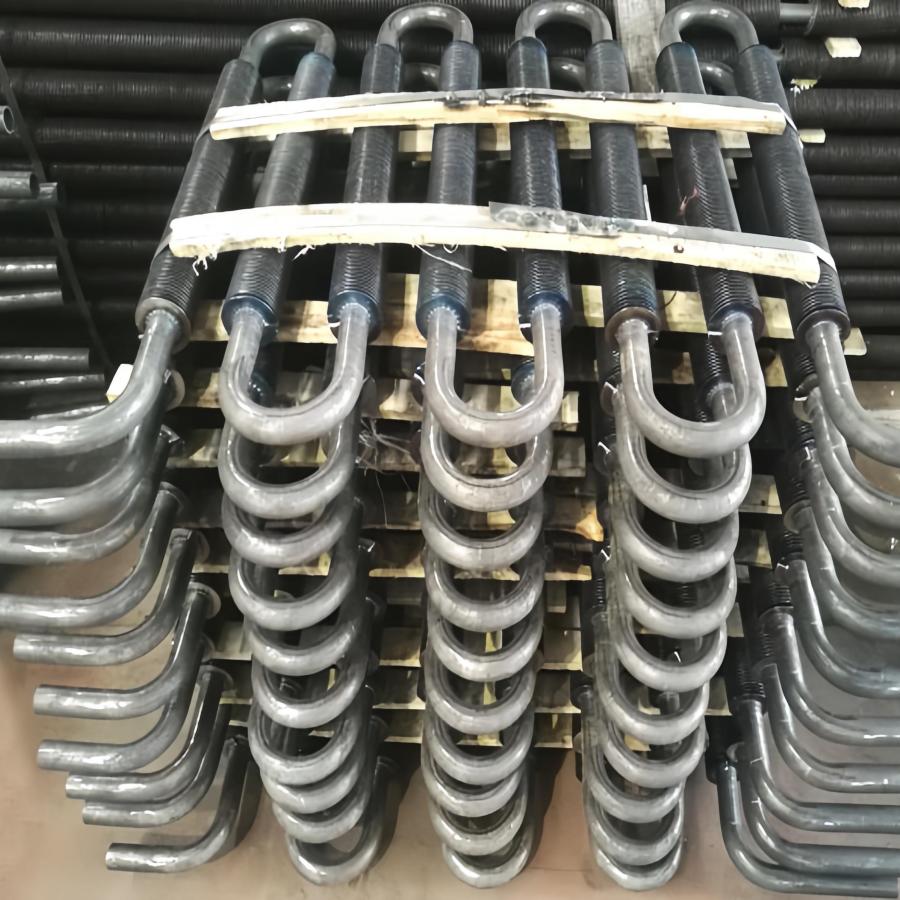Products Description
What are serpentine finned tubes?
Serpentine finned tubes or bend fin tubes are an important type of heat transfer device used in a wide range of industrial applications, such as boilers and heat exchangers. Their unique design, featuring a continuous fin wound and bend in a serpentine shape around the tubes outside surface, increases the surface area of the tube and improves heat transfer between the tube and the surrounding environment.
What the serpentine finned tubes main usages?
Main Usages
Small Energy-Saving Devices
A special serpentine finned tube can be designed to meet specific requirements. This design can be optimized for the size and shape of the device and the heat transfer characteristics required.
Renewable Energy Systems
Serpentine finned tubes can be used to transfer heat from solar panels or underground heat sources to water or other fluids. This process increases the efficiency of the system and reduces energy consumption.
Electronics Cooling
Serpentine finned tubes can be used to transfer heat away from electronic components, improving their performance and extending their lifespan.
Serpentine finned tubes are particularly useful in industries where high heat transfer rates are required, such as the petrochemical and power generation industries. They can be used in a variety of heat exchanger designs, such as shell-and-tube or air-cooled heat exchangers, and are often used in applications where space is limited.
Overall, the design of a special serpentine finned tube for small energy-saving devices will depend on the specific application and requirements of the device. However, with careful design and optimization, these tubes can play an important role in improving the efficiency and performance of a wide range of energy-saving devices.
Serpentine finned tubes size:
Serpentine finned tubes are available in a wide range of sizes and fin types to meet different application requirements. The main size parameters for serpentine finned tubes include:
Tube Diameter: The tube diameter is the outer diameter of the base tube, which can range from a few millimeters to several inches depending on the application.
Fin Height: The fin height is the distance between the base tubes outer surface and the highest point of the fin. Fin heights can range from a few millimeters to several centimeters.
Fin Thickness: The fin thickness is the thickness of the fin material, which can vary depending on the type of fin and the application requirements.
Fin Pitch: The fin pitch is the distance between adjacent fins along the tubes circumference. Fin pitches can vary depending on the application requirements.
The fin types commonly used in serpentine finned tubes include:
Extruded Fin
Extruded finned tubes have fins that are formed by extruding the fin material through a die onto the base tubes outer surface. This process results in fins that are firmly attached to the base tube and have excellent heat transfer characteristics.
L-Foot Fin
L-foot finned tubes have fins that are attached to the base tube using L-shaped feet that are welded or brazed to the tubes outer surface. This type of fin provides good heat transfer performance and is suitable for high-temperature applications.
G-Fin
G-fin tubes have fins that are formed by rolling a flat strip of fin material into a G-shaped configuration and then attaching it to the base tube using mechanical methods. G-fin tubes have high heat transfer rates and are suitable for use in compact heat exchangers.
Knurled Fin
Knurled finned tubes have fins that are formed by knurling the base tubes outer surface to create small ridges, which increase the heat transfer area. Knurled fins are suitable for applications where high heat transfer rates are required.
hFW Solid fin
High frequency welded solid fin tubes have a continuous fin that is welded onto the outer surface of the base tube using a high frequency welding process. The fins can be made from various materials such as carbon steel strip, alloy steel strip and stainless steel strip.
HFW Serrated Fin
High frequency welded serrated fin tubes, on the other hand, have fins with serrated edges that are welded onto the base tube using a high frequency welding process. The serrations on the fins create turbulence in the fluid flow, which enhances the heat transfer coefficient and improves the overall efficiency of the heat exchanger.
The choice of the main size and fin type of serpentine finned tubes will depend on the specific application requirements, such as the heat transfer rate, fluid flow rate, and pressure drop.



